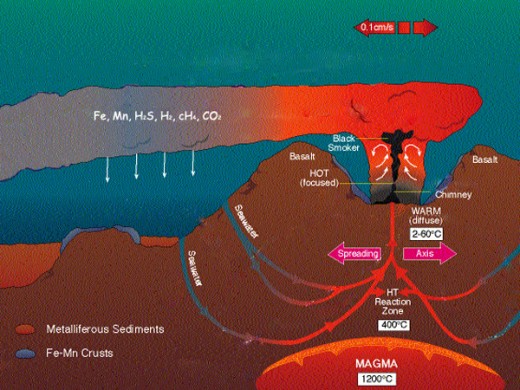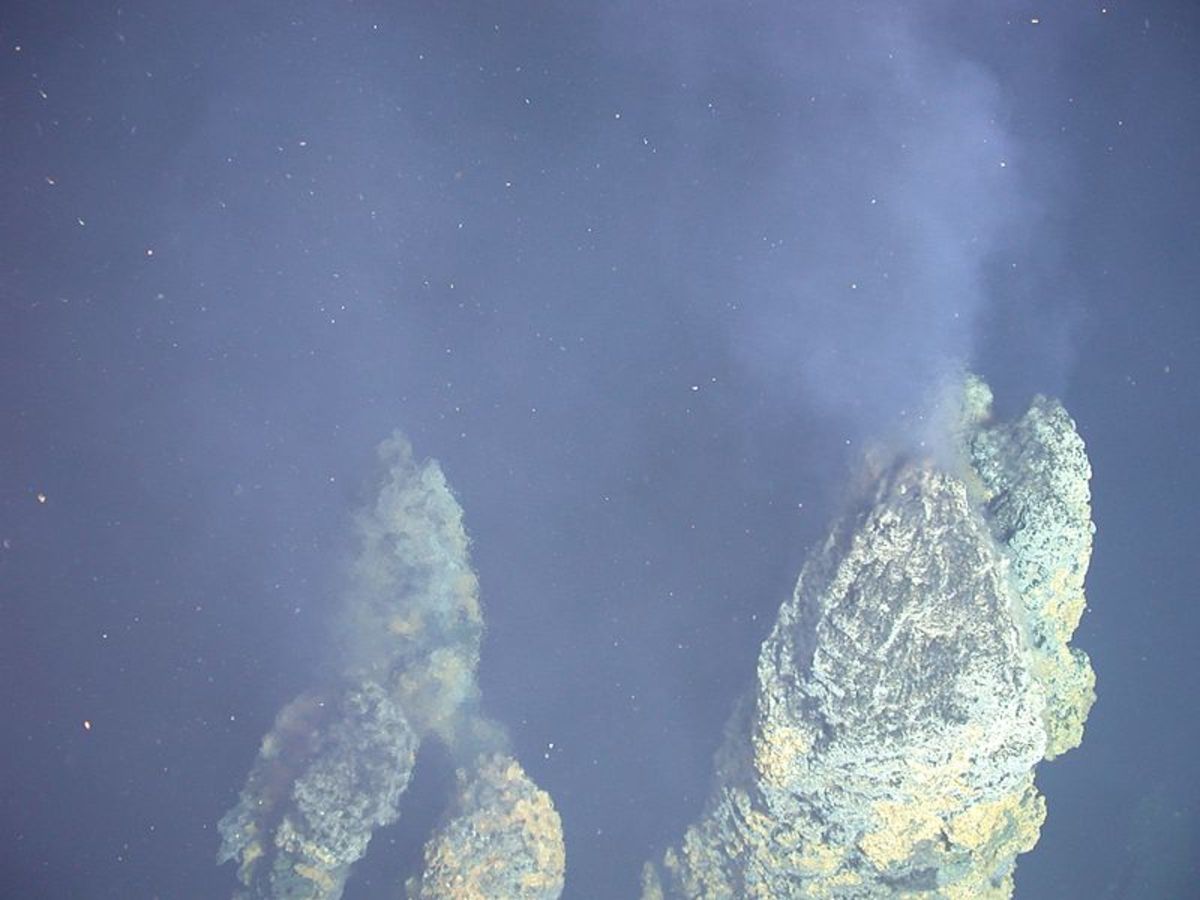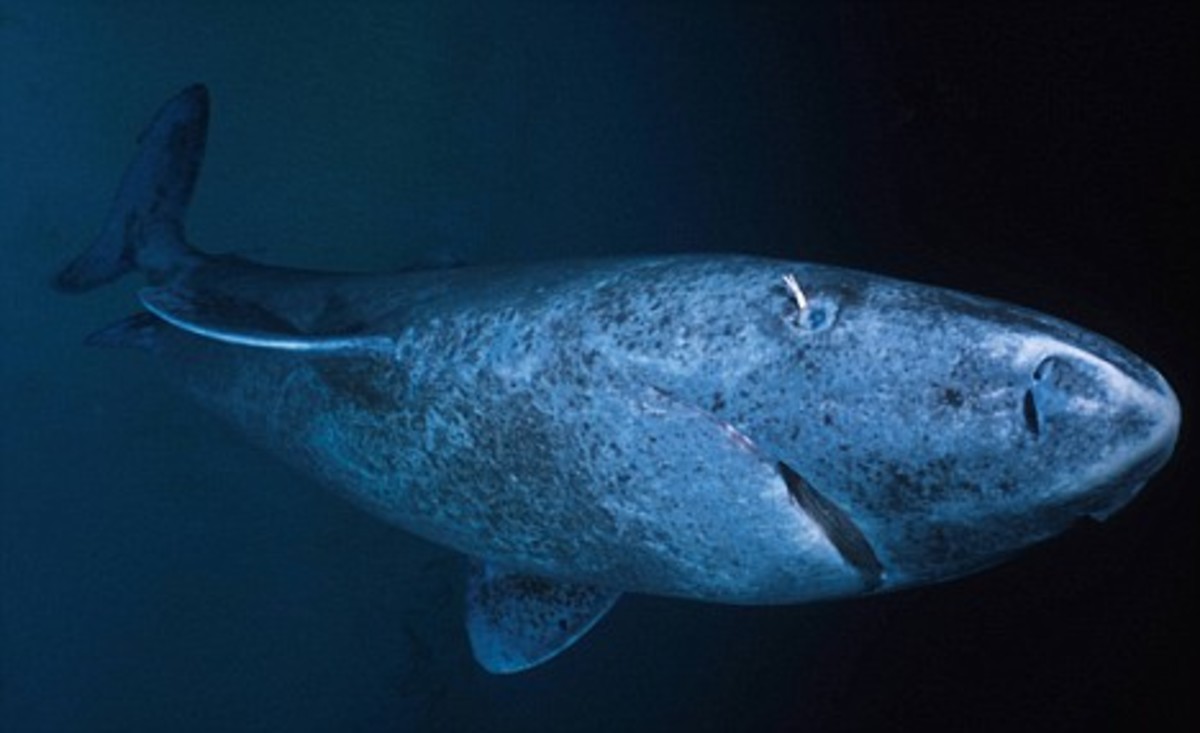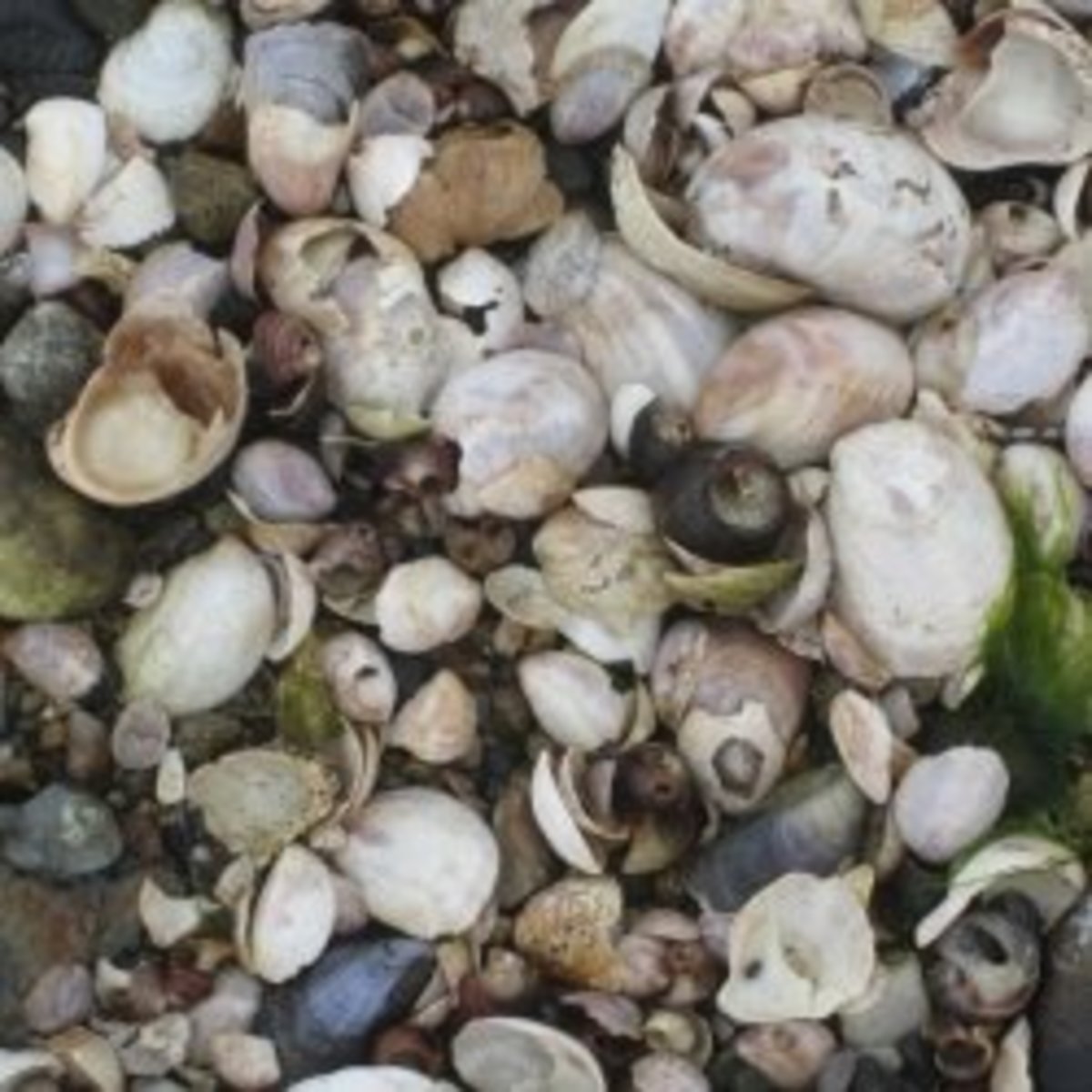Biogeography and Typical Manifestations of Hydrothermal Systems

Hydrothermal vents occur worldwide along the junctions of tectonic plates and ridge crests deep in the open ocean. They are also found along spreading centers, back-arc basins, volcanic arcs and active seamounts (Bachraty et el 2009). The vents are formed by geologic processes associated with seafloor spreading, volcanic activity and plate tectonics. Sites occur an average of every 50 to 100 kilometers along ridge systems, but not all are geothermally active. Scientists estimate there is a total of approximately 1000 sites hosting biological communities at any one time. (Devey et el 2007). However, only ten percent of the global ridge system has been explored for hydrothermal vent ecosystems, so this estimate is sure to vary as exploration continues (Ramirez-Llodra et el 2007). The ridges along which vents occur are categorized into six biogeographic provinces: the Northwest Pacific, Southwest Pacific, Northeast Pacific, Northern East-Pacific Rise, Southern East-Pacific Rise and the Mid-Atlantic Ridge. All together these provinces create the Global Mid-Oceanic Ridge System, which stretches 60,000 km along the ocean floor (Bachraty et el 2009, Van Dover et el 2002).
Hydrothermal vents are usually characterized by the formation of a chimney structure. The chimneys are formed by cold salt water and hot vent effluents mixing, with the resultant precipitation of dissolved metals. Chimneys are largely composed of polymetallic sulfide complexes, with zinc sulfide being the most prevalent deposit formed. The deposits build continuously as the vent site is active (Erickson et el 2009, Takai et el 2001). Chimneys provide numerous microhabitats for microbial communities to colonize, and vent sites host one of the highest levels of microbial diversity on the planet (Glowka 2003, Takai et el 2001). The chimneys, also referred to as mounds, range greatly in size. Slow spreading ridges tend to be where the most impressive mounds form. The largest known individual deposit is called the Trans-Atlantic Geotraverse Hydrothermal Mound, and is located along the Mid-Atlantic Ridge at a depth of 3650 m. The TAG mound is over 50 m high, and compounds containing gold, opal, pyrite, quartz and many other precious minerals have been extracted from the site (Kingston-Tivey 2007).
Hydrothermal vent systems are ultimately powered by heat from the Earth’s asthenosphere and mantle (Thiel & Koslow 2001). Geothermal energy from the Earth’s interior circulates seawater through the upper few kilometers of the crust at tectonic spreading zones, heating the seawater and infusing it with dissolved metallic, sulfuric and gaseous compounds (Pond et el 2008). The fluid is then ejected from a chimney, often at temperatures exceeding 400 Celsius. The highest temperature at which life has observed is 121 C. Archaea Geogemma barossii is the only known organism that can survive in such conditions, although not for long. Some strains of bacteria colonize areas up to 150 C. (Fisher et el 2007, Schulte 2007). Water collected at the Okinawa Trough vent site contained intact microbial ribosomal DNA at temperatures that far exceed the limit at which protein complexes retain their structure (Takai et el 2001).
In addition to being superheated, vent effluents are also typically anoxic, highly acidic, and enriched with a multitude of dissolved compounds containing essential minerals and elements. Metallic aggregates, carbon dioxide, silica, hydrogen gas, hydrogen sulfide and methane are all common chemical components of hydrothermal vent effluents. Hydrogen sulfide concentrations at hydrothermal vent sites can be 10 to 100 times higher than what is toxic to most organisms (Fisher et el 2007). Chemical solubility is a function of many variables including substrate composition, permeability and stereochemical structure. Natural properties of the heat source and tidal periodicity contribute to the temperatures and pressures at which chemical reactions will occur in the environment (Kingston-Tivey 2007, Van Dover & Lutz 2004).
The environmental conditions that occur at individual hydrothermal vent sites can vary greatly according to geographical location. Off-axis vent sites, for example, occur several kilometers away from the actual spreading zone. Effluents from these locations are usually alkaline, low in dissolved carbon dioxide and contain high concentrations of dissolved methane, hydrogen gas and other hydrocarbons with low molecular mass (Martin et el 2008). Some sites, such as the Lost City hydrothermal system, are completely unique habitats that host environmental conditions mimicked nowhere else on Earth- not even at other hydrothermal vents. The unique combination of dissolved chemicals that differentiate the Lost City from other vent sites is a product of serpentinization, a process involving a complex transformation of metamorphic rock in the Earth’s mantle. Fluids characteristic of the Lost City site are alkaline, warm, low in sulfides and high in methane and hydrogen (Fisher et el 2007).
The variability of the environmental conditions surrounding sites of effluence creates a wide range of geochemical niches and potential energy sources for microorganisms. Habitat conditions can fluctuate significantly in temperature over distances as small as a few centimeters. Ambient water temperatures at mid-ocean ridge sites has been measured at two degrees Celsius, which is a sharp contrast to the superheated effluent, which can be hundreds of degrees (Fisher et el 2007, Ramirez-Llodra et el 2007).
Thanks for Reading! Literature consulted:
Bachraty, C., P. Legendre and D. Desbruyeres. “Biogeographic Relationships Among Deep-Sea Hydrothermal Vent Fauna at Global Scale.” Deep Sea Research. 56 (2009): 1371-1378.
Devey, C., C. Fisher and S. Scott. “Responsible Science at Hydrothermal Vents.” Oceanography . 20.1 (2007): 162-171.
Erickson, K., S. Macko and C. Van Dover. “Evidence for a Chemoautotrophically Based Food Web at Inactive Hydrothermal Vents (Manus Basin).” Deep Sea Research II . 56 (2009): 1677-1585.
Glowka, L. “Putting Marine Scientific Research on a Sustainable Footing at Hydrothermal Vents.” Marine Policy . 27.4 (2003): 303-312.
Kingston-Tivey, M. “Generation of Seafloor Hydrothermal Vent Fluids and Associated Mineral Deposits.” Oceanography . 20.1 (2007): 50-65.
Martin, W., J. Baross, D. Kelley and M. Russell. “Hydrothermal Vents and the Origin of Life.” Nature . 6 (2008): 805-814.
Pond, D., A. Fallick, C. Stevens, D. Morrison, and D. Dixon. “Vertebrate Nutrition in a Deep-Sea Hydrothermal Vent Ecosystem: Fatty Acid and Stable Isotope Evidence.” Deep Sea Research . 55 (2008): 1718- 1726.
Ramirez-Llodra, E., T. Shank and C. German. “Biodiversity and Biogeography of Hydrothermal Vent Species.” Oceanography . 20.1 (2007): 30-41.
Schulte, M. “The Emergence of Life on Earth.” Oceanography . 20.1 (2007): 42-49.
Takai, K., T. Komatsu, F. Inagaki, and K. Horikoshi. “Distribution of Archaea in a Black Smoker Chimney Structure.” Applied and Environmental Microbiology . 67.8 (2001): 3618-3629.
Van Dover, C., C. German, K. Speer, L. Parson, and R. Vrijenhoek. “Evolution and Biogeography of Deep-Sea Methane Vent and Seep Invertebrates.” Science . 295 (2002): 1253-1257
Van Dover, C. and R. Lutz. “Experimental Ecology at Deep-Sea Hydrothermal Vents: A Perspective.” Journal of Experimental Marine Biology and Ecology . 300 (2004): 273-307.









